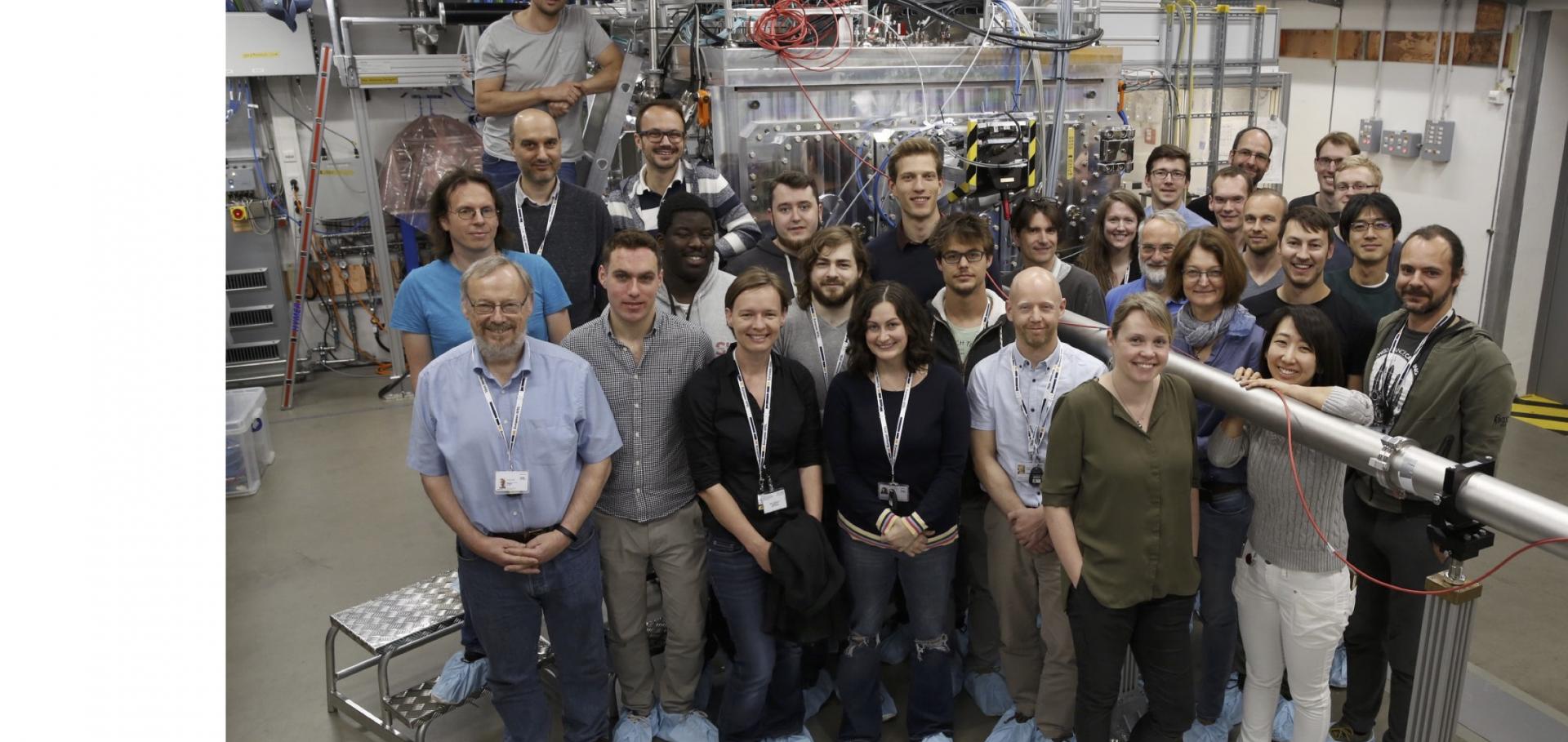Fourier-transform inelastic X-ray scattering from time- and momentum-dependent phonon-phonon correlations
Nature Physics (2013)
Abstract:
The macroscopic characteristics of a material are determined by its elementary excitations, which dictate the response of the system to external stimuli. The spectrum of excitations is related to fluctuations in the density-density correlations and is typically measured through frequency-domain neutron or X-ray scattering. Time-domain measurements of these correlations could yield a more direct way to investigate the excitations of solids and their couplings both near to and far from equilibrium. Here we show that we can access large portions of the phonon dispersion of germanium by measuring the diffuse scattering from femtosecond X-ray free-electron laser pulses. A femtosecond optical laser pulse slightly quenches the vibrational frequencies, producing pairs of high-wavevector phonons with opposite momenta. These phonons manifest themselves as time-dependent coherences in the displacement correlations probed by the X-ray scattering. As the coherences are preferentially created in regions of strong electron-phonon coupling, the time-resolved approach is a natural spectroscopic tool for probing low-energy collective excitations in solids, and their microscopic interactions.Ultrafast three-dimensional imaging of lattice dynamics in individual gold nanocrystals.
Science 341:6141 (2013) 56-59
Abstract:
Key insights into the behavior of materials can be gained by observing their structure as they undergo lattice distortion. Laser pulses on the femtosecond time scale can be used to induce disorder in a "pump-probe" experiment with the ensuing transients being probed stroboscopically with femtosecond pulses of visible light, x-rays, or electrons. Here we report three-dimensional imaging of the generation and subsequent evolution of coherent acoustic phonons on the picosecond time scale within a single gold nanocrystal by means of an x-ray free-electron laser, providing insights into the physics of this phenomenon. Our results allow comparison and confirmation of predictive models based on continuum elasticity theory and molecular dynamics simulations.The effects of ionization potential depression on the spectra emitted by hot dense aluminium plasmas
High Energy Density Physics 9:2 (2013) 258-263
Abstract:
Recent experiments at the Linac Coherent Light Source (LCLS) X-ray Free-Electron-Laser (FEL) have demonstrated that the standard model used for simulating ionization potential depression (IPD) in a plasma (the Stewart-Pyatt (SP) model, J.C. Stewart and K.D. Pyatt Jr., Astrophysical Journal 144 (1966) 1203) considerably underestimates the degree of IPD in a solid density aluminium plasma at temperatures up to 200 eV. In contrast, good agreement with the experimental data was found by use of a modified Ecker-Kröll (mEK) model (G. Ecker and W. Kröll, Physics of Fluids 6 (1963) 62-69). We present here detailed simulations, using the FLYCHK code, of the predicted spectra from hot dense, hydrogenic and helium-like aluminium plasmas ranging in densities from 0.1 to 4 times solid density, and at temperatures up to 1000 eV. Importantly, we find that the greater IPDs predicted by the mEK model result in the loss of the n = 3 states for the hydrogenic ions for all densities above ≈0.8 times solid density, and for the helium-like ions above ≈0.65 solid density. Therefore, we posit that if the mEK model holds at these higher temperatures, the temperature of solid density highly-charged aluminium plasmas cannot be determined by using spectral features associated with the n = 3 principal quantum number, and propose a re-evaluation of previous experimental data where high densities have been inferred from the spectra, and the SP model has been used. © 2013 Elsevier B.V.Comparison between x-ray scattering and velocity-interferometry measurements from shocked liquid deuterium
Physical Review E - Statistical, Nonlinear, and Soft Matter Physics 87:4 (2013)
Abstract:
The equation of state of light elements is essential to understand the structure of Jovian planets and inertial confinement fusion research. The Omega laser was used to drive a planar shock wave in the cryogenically cooled deuterium, creating warm dense matter conditions. X-ray scattering was used to determine the spectrum near the boundary of the collective and noncollective scattering regimes using a narrow band x-ray source in backscattering geometry. Our scattering spectra are thus sensitive to the individual electron motion as well as the collective plasma behavior and provide a measurement of the electron density, temperature, and ionization state. Our data are consistent with velocity-interferometry measurements previously taken on the same shocked deuterium conditions and presented by K. Falk. This work presents a comparison of the two diagnostic systems and offers a detailed discussion of challenges encountered. ©2013 American Physical Society.Comparison between x-ray scattering and velocity-interferometry measurements from shocked liquid deuterium.
Phys Rev E Stat Nonlin Soft Matter Phys 87:4 (2013) 043112


